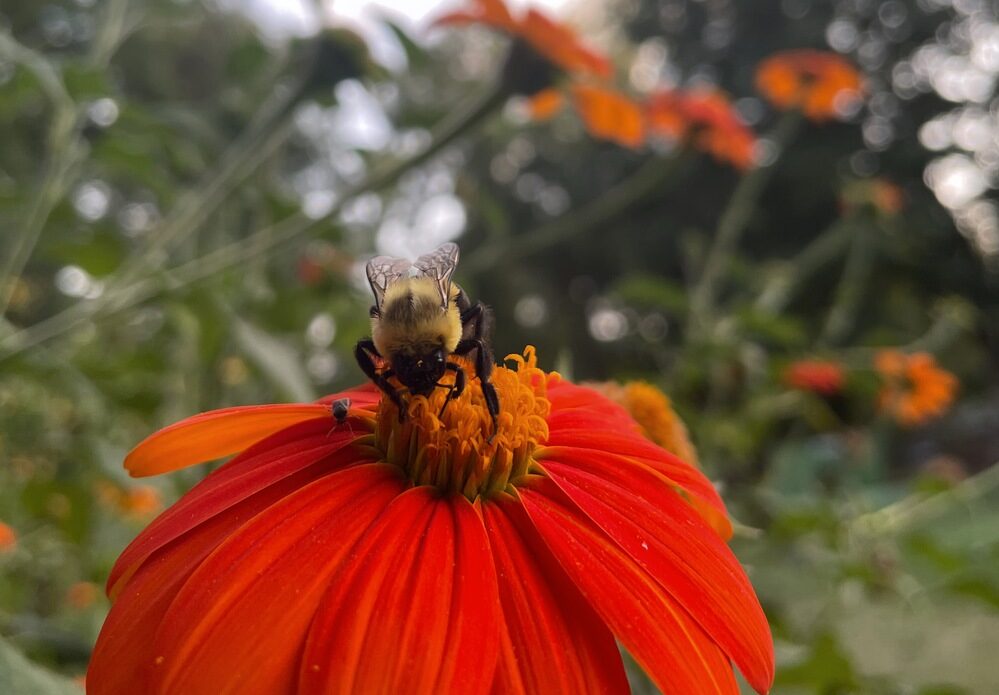Brighten up your fall landscape with Tithonia

JACKSONVILLE, Ill. — As summer transitions to fall, our landscapes also transition. The bright-colored flowers of summer begin to fade, and many plants begin to look ragged. Goldenrod and asters often provide much-needed color to the landscape.
However, another plant that can add some color to our landscapes is Tithonia, also known as Mexican sunflower.
What does Tithonia look like?
Mexican sunflower (Tithonia rotundifolia) is an annual native to Mexico and Central America. Plants typically grow 4-6 feet tall but can be taller. The dark green leaves can range in size from 3-12” long and can be entire or lobed. Both the leaves and the stems are covered in soft, downy hairs.
Mexican sunflowers typically begin blooming in July and will continue until a frost. Plants produce showy 3-inch flowers with red-orange ray flowers and yellow disc flowers. During peak bloom, plants can be covered with dozens of flowers.
Growing and caring for tithonia
Tithonia can be started indoors or seeded directly into the garden after the last frost. If starting indoors, seeds should be planted 6-8 weeks before the average last frost. Regardless of where you plant your seeds (indoors or out), plant them shallowly because light is needed for germination.
Tithonia are heat-loving plants that grow best in warm, sunny weather. Plants may grow slowly in the season, but as the weather begins to warm, plants will take off. Deadheading plants will help prolong blooming. If plants are allowed to produce seeds, they may self-seed.
Due to their height and course look, tithonia make a good background plant or can be used as a living screen (just remember it’s an annual). They grow best in full sun with well-drained soils. They will tolerate poor soils, so tithonia may be a plant to try if you have an area where plants struggle. Avoid planting them in heavy soils or fertilizing them heavily (nitrogen). This can lead to tall plants that produce lots of foliage, weak stems, and few flowers.
Plants will often benefit from being staked to prevent them from falling over. Planting in a sheltered location, away from strong winds, will help prevent plants from flopping. Plants can also be pinched early in the season to produce bushier, shorter plants that are less likely to need staking. Planting plants 2-3 feet apart will also allow them to support one another.
More than ornamental appeal
In addition to their ornamental appeal, tithonia is also attractive to various pollinators. Bees, butterflies, flies, and hummingbirds frequently visit flowers. In my yard, I often find monarch butterflies taking nectar from the flowers during their migration to Mexico. If you need any more reason to grow tithonia, they are also drought tolerant, and deer often leave them alone.
Good Growing fact of the week: Despite their common name, Mexican sunflowers aren’t true sunflowers (Helianthus) but are in the same family as sunflowers (Asteraceae).
Miss Clipping Out Stories to Save for Later?
Click the Purchase Story button below to order a print of this story. We will print it for you on matte photo paper to keep forever.

